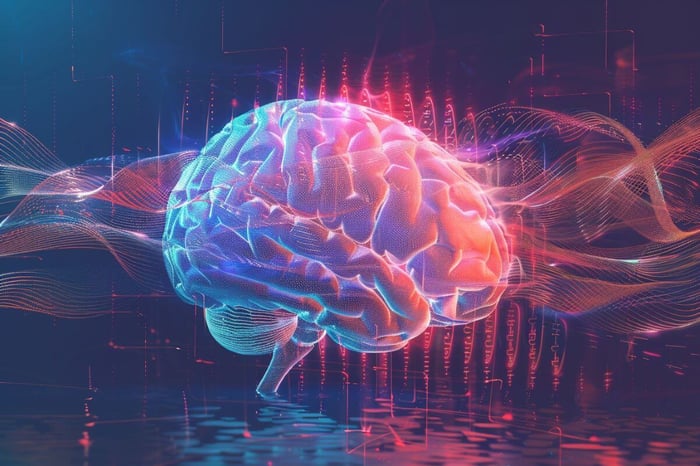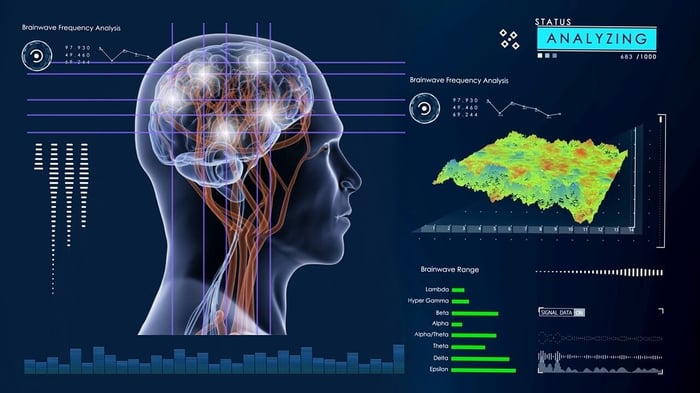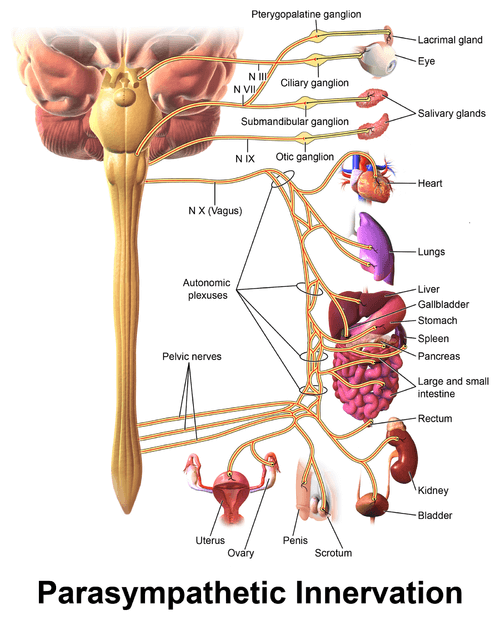Table of Contents
How Sound Heals
The mechanism of Sound Healing
From musical compositions to the rhythmic beats of nature, sound has always been an integral part of human life. In the past few decades, the therapeutic applications of sound, have gained significant attention, with practitioners using various techniques and instruments to alleviate physical, mental, and emotional distress. While "sound healing" may appear as a mystical concept, modern science offers compelling explanations for its efficacy.
In this unique article, we explore how sound heals through the lens of neuroscience, physiology, and psychology, with the help of scientific studies and real-life examples.
Neuroscience of Sound Healing
Sound and the brain are intricately connected. From an evolutionary perspective, humans have relied on sound to detect danger, hunt, communicate and regulate emotional states. Today, neuroscientific research provides insight into how sound can be consciously used for healing, influence brain activity and neurochemistry.

Brainwave Entrainment
One of the most researched areas in sound healing is brainwave entrainment. This phenomenon occurs when external auditory stimuli, such as rhythmic drumming or uneven frequencies, synchronize the brain's electrical activity.
For example, if you have ever noticed a feeling of calm and relaxation during a yoga session or while listening to ambient music, you’ve likely experienced brainwave entrainment. A study published in Frontiers in Human Neuroscience found that "brainwave entrainment can effectively modulate mood and cognitive states, providing significant benefits in stress reduction and cognitive enhancement" (Carrasco et al., 2020).
Real-life Example:
A sound healing practitioner might use binaural beats to help clients suffering from insomnia. By introducing binaural beats with frequencies in the delta range (0.5-4 Hz), which are associated with deep sleep, the practitioner can guide the client’s brain into a state that promotes restful sleep.
The majority of clients report that after several sessions, they no longer struggle with falling asleep or staying asleep through the night, which is an example of how brainwave entrainment can facilitate healing.

Neuroplasticity and Sound
Neuroplasticity refers to the brain's ability to reorganize itself by forming new neural connections. Studies have shown that exposure to certain sounds and music therapy, can enhance neuroplasticity, especially in individuals recovering from brain injuries or suffering from neurodegenerative conditions like Alzheimer's disease.
Research published in NeuroImage states, "Music and rhythmic auditory stimulation have been shown to promote neuroplasticity, which is crucial for recovery in patients with neurological deficits" (Thaut et al., 2014). This is why sound healing has been increasingly integrated into rehabilitation programs for stroke patients or individuals with traumatic brain injuries.
Real-life Example:
Consider the case of Gabrielle Giffords, a former U.S. Congresswoman who survived a gunshot wound to the head in 2011. Part of her recovery included music therapy, where rhythmic and melodic elements were used to help her regain her speech. This example underscores how sound can assist in rewiring the brain after traumatic injury, offering real-life evidence of sound’s capacity to promote neuroplasticity and healing.
Physiology of Sound Healing
Sound healing doesn't just work on the brain; it also affects the body at a physiological level. The human body is highly sensitive to sound vibrations, and these vibrations can have wide-ranging effects, from the cellular to the systemic level.
Resonance and Cellular Health
The human body is essentially a vibratory system. When external vibrations, such as those produced by singing bowls, gongs, or tuning forks, are applied, they can bring the body into harmonic resonance, promoting healing.
Low-frequency sound waves, in particular, have been found to enhance cellular repair mechanisms. A study published in Nature revealed that "low-frequency sound waves significantly enhanced nitric oxide production, a molecule vital for cellular repair and immune responses" (Young et al., 2018).
Real-life Example:
Sound therapy has become a complementary tool for people undergoing cancer treatment. One patient, Susan, was undergoing chemotherapy and experienced significant stress and fatigue. She turned to sound therapy, using Himalayan singing bowls, as a supportive treatment to complement her medical care. After several sessions, Susan reported reduced stress and an improved sense of well-being. She credited sound therapy for helping her body feel more resilient and energized, allowing her to better cope with her cancer treatment.
The Vagus Nerve and Sound Healing
The vagus nerve is a major component of the parasympathetic nervous system, which regulates rest, digestion, and recovery. Stimulation of the vagus nerve through sound frequencies or vocal toning (such as chanting or humming) helps to relax the whole body.
According to a study in Brain Stimulation, "Vagal nerve stimulation using sound frequencies or vibrations can reduce heart rate, lower blood pressure, and improve immune function by activating the parasympathetic system" (Bretherton et al., 2019).
Real-life Example:
Imagine someone is chanting or humming during a meditation session. The vibrations produced by the voice directly stimulate the vagus nerve, promoting a feeling of relaxation and calm.
Chanting and humming can be used in high-stress jobs as part of self-care routine to help lower stress levels and regulate heart rate after high-pressure events.

Psychological Benefits of Sound Healing
Beyond the neurological and physiological effects, sound has profound implications for emotional and mental well-being. This is where the psychological aspects of sound healing come into play, particularly in reducing stress, anxiety, and depression.
Sound and Emotional Regulation
The connection between sound and emotions is deeply rooted in human biology. Sounds, especially music, can evoke a range of emotions, from joy to sadness. This is because music and sound influence the brain's limbic system, the area responsible for emotions, memories, and arousal.
A study in The Journal of Music Therapy noted that "music therapy and sound-based interventions can effectively reduce cortisol levels, promoting relaxation and emotional regulation in individuals with stress and anxiety disorders" (Pelletier, 2004). This is particularly important for people suffering from chronic stress or trauma.
Real-life Example:
Veterans suffering from post-traumatic stress disorder (PTSD) have benefited from sound healing, including drumming and music therapy. One veteran shared that after participating in a drum circle as part of his therapy, he felt a significant decrease in anxiety and hypervigilance. The repetitive and rhythmic sounds helped him focus his mind and release stored tension from his body, leading to long-term improvements in his PTSD symptoms.
Mindfulness and Sound Healing
Sound is a powerful tool for inducing a mental state of focused awareness on the present moment. Practices such as sound meditation, which incorporates singing bowls, gongs, chimes, or vocal toning, allow individuals to anchor their attention on auditory stimuli.
In a study published in Mindfulness, researchers found that "sound-based mindfulness practices such as sound baths and guided sound meditations can reduce intrusive thoughts and promote a calm mental state" (Anderson et al., 2021).
Real-life Example:
Sound baths have become an integral part of many wellness retreats to help participants understand the concept of mindfulness. In the course of a sound bath, attendees recline as a range of instruments, such as Himalayan singing bowls, crystal bowls and chimes, are played. The soft vibrations help participants return to the present, to quiet the mental 'static' and open a pathway to mental purity. These sessions have been extremely effective for those with overthinking or anxiety to obtain a state of deep mental calm.
Sound Healing and Group Dynamics
Sound healing is often performed in groups, enhancing its psychological benefits through social bonding and shared experiences. The act of participating in a group sound healing session, such as a gong bath or a sound circle, fosters a sense of belonging and community.
Research on group music-making indicates that "synchronizing with others during sound experiences enhances oxytocin release, which promotes feelings of trust and social cohesion" (Koelsch, 2010).
Real-life Example:
Some communities offer group sound healing experiences, such as kirtan (group singing) or drum circles. During these sessions, participants often report feeling a deep sense of connection with others, even those they just met. For example, during a kirtan session, where the group sings chants together, individuals report a sense of unity, peace, and shared emotional release. These group dynamics can be especially healing for individuals who feel isolated or disconnected from others, providing them with a safe space to bond through sound.

FAQs
What is sound healing and how does it work?
Sound healing is a therapeutic practice that uses sound, vibration, and music to improve mental, emotional, and physical well-being. It works by engaging the brain, nervous system, and body through vibrational stimulation, brainwave entrainment, and mindful listening, promoting relaxation, balance, and healing.
What is brainwave entrainment, and how does it relate to sound healing?
Brainwave entrainment is a process where rhythmic sound or vibrations synchronize brainwave activity. By using instruments or tones aligned with delta or theta brainwaves, practitioners can guide the brain into states associated with deep relaxation or sleep—ideal for stress relief and mental clarity.
Can sound actually change the brain?
Yes. Sound can influence neuroplasticity—the brain's ability to form new connections. Music therapy and rhythmic sound stimulation have shown benefits in recovery from brain injuries, stroke, and conditions like Alzheimer’s. These sounds activate regions of the brain associated with memory, speech, and movement.
How does sound affect the body on a cellular level?
Low-frequency sound waves can enhance nitric oxide production in the body, which supports cellular repair, circulation, and immune responses. Vibrations from instruments like singing bowls or gongs can resonate with the body’s cells and tissues, promoting overall vitality and healing.
What role does the vagus nerve play in sound healing?
The vagus nerve is a key part of the parasympathetic nervous system, responsible for rest, digestion, and recovery. Vocal toning, chanting, and low-frequency sound can stimulate the vagus nerve, reducing heart rate, calming the body, and improving immune function.
Is sound healing effective for stress, anxiety, or PTSD?
Yes. Studies have shown that sound and music therapies can reduce cortisol levels and regulate the limbic system, which governs emotional responses. Practices like drumming or sound baths have helped individuals—including veterans with PTSD—achieve emotional release, calm, and grounding.
Can sound healing improve mindfulness?
Absolutely. Sound-focused meditations help quiet mental chatter and anchor awareness in the present moment. Instruments like singing bowls, gongs, or chimes are commonly used in sound baths to facilitate deep states of mindfulness and mental clarity.
What does sound healing feel like in a group setting?
Group sound healing enhances emotional connection and a sense of belonging. Shared experiences like drum circles or kirtan singing can promote oxytocin release (the bonding hormone), making participants feel seen, safe, and emotionally uplifted—even among strangers.
Is there scientific research supporting sound healing?
Yes, though more studies are needed. Research supports its role in reducing stress, enhancing neuroplasticity, stimulating the vagus nerve, and improving emotional well-being. Institutions have begun integrating sound therapy into rehab, cancer support, and trauma recovery programs.
Is sound healing a spiritual or scientific practice?
It can be both. While rooted in ancient spiritual traditions, modern science provides a growing body of evidence for its effects on the brain and body. Whether used for wellness, recovery, or inner exploration, sound healing is a bridge between the measurable and the felt.

